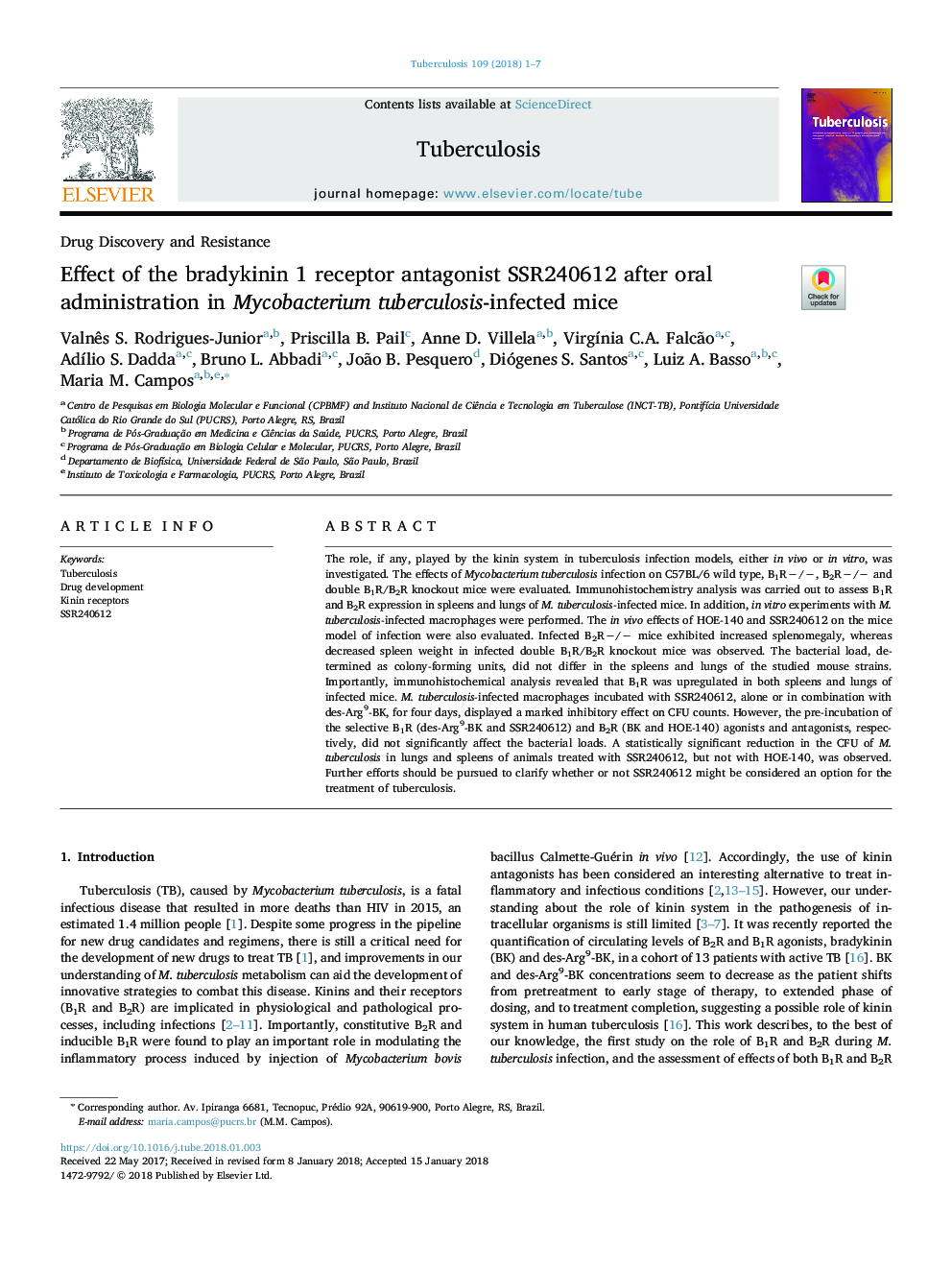| Article ID | Journal | Published Year | Pages | File Type |
|---|---|---|---|---|
| 8485154 | Tuberculosis | 2018 | 7 Pages |
Abstract
The role, if any, played by the kinin system in tuberculosis infection models, either in vivo or in vitro, was investigated. The effects of Mycobacterium tuberculosis infection on C57BL/6 wild type, B1Râ/â, B2Râ/â and double B1R/B2R knockout mice were evaluated. Immunohistochemistry analysis was carried out to assess B1R and B2R expression in spleens and lungs of M. tuberculosis-infected mice. In addition, in vitro experiments with M. tuberculosis-infected macrophages were performed. The in vivo effects of HOE-140 and SSR240612 on the mice model of infection were also evaluated. Infected B2Râ/â mice exhibited increased splenomegaly, whereas decreased spleen weight in infected double B1R/B2R knockout mice was observed. The bacterial load, determined as colony-forming units, did not differ in the spleens and lungs of the studied mouse strains. Importantly, immunohistochemical analysis revealed that B1R was upregulated in both spleens and lungs of infected mice. M. tuberculosis-infected macrophages incubated with SSR240612, alone or in combination with des-Arg9-BK, for four days, displayed a marked inhibitory effect on CFU counts. However, the pre-incubation of the selective B1R (des-Arg9-BK and SSR240612) and B2R (BK and HOE-140) agonists and antagonists, respectively, did not significantly affect the bacterial loads. A statistically significant reduction in the CFU of M. tuberculosis in lungs and spleens of animals treated with SSR240612, but not with HOE-140, was observed. Further efforts should be pursued to clarify whether or not SSR240612 might be considered an option for the treatment of tuberculosis.
Related Topics
Life Sciences
Immunology and Microbiology
Applied Microbiology and Biotechnology
Authors
Valnês S. Rodrigues-Junior, Priscilla B. Pail, Anne D. Villela, VirgÃnia C.A. Falcão, AdÃlio S. Dadda, Bruno L. Abbadi, João B. Pesquero, Diógenes S. Santos, Luiz A. Basso, Maria M. Campos,
